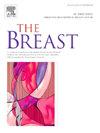Impact of routine FDG-PET/CT on locoregional treatment decisions in breast cancer patients receiving preoperative systemic therapy
IF 7.9
2区 医学
Q1 OBSTETRICS & GYNECOLOGY
引用次数: 0
Abstract
Purpose
This study evaluates the clinical impact of routine FDG-PET/CT on locoregional treatment in a large cohort of breast cancer patients scheduled for preoperative systemic therapy (PST).
Methods
Patients scheduled for PST were identified from a retrospective database between 2011 and 2020 at our hospital. All patients underwent staging by FDG-PET/CT prior to PST. The rate of regional upstaging by FDG-PET/CT compared to initial locoregional staging was assessed, as well as its implications on surgical and radiotherapeutic management. Logistic regression analysis was used to evaluate the correlation between clinical characteristics and regional upstaging by FDG-PET/CT.
Results
Among 1228 eligible patients, FDG-PET/CT detected additional regional lymph node involvement in 145 patients (12 %). This resulted in treatment modifications for 140 patients (11 %), including changes to the axillary surgical approach in 27 patients (2 %), and adjustments to the postoperative radiation therapy plans in 115 patients (9 %). The majority of these modifications occurred in patients initially staged as cN1(1–3) (92/140). Clinical T stage was significantly associated with regional upstaging by FDG-PET/CT.
Conclusion
FDG-PET/CT staging before PST frequently identifies additional regional lymph node involvement, significantly altering locoregional treatment strategies in the majority.
常规FDG-PET/CT对接受术前全身治疗的乳腺癌患者局部治疗决策的影响
目的:本研究评估常规FDG-PET/CT对术前全身治疗(PST)乳腺癌患者局部治疗的临床影响。方法从我院2011年至2020年的回顾性数据库中确定计划进行PST的患者。所有患者在PST前通过FDG-PET/CT进行分期。评估了FDG-PET/CT与初始局部区域分期相比的区域分期率,以及其对手术和放射治疗管理的影响。采用Logistic回归分析评估临床特征与FDG-PET/CT局部占优的相关性。结果在1228例符合条件的患者中,FDG-PET/CT检测到145例(12%)患者有额外的区域淋巴结累及。这导致140例(11%)患者改变了治疗方法,包括27例(2%)患者改变了腋窝手术入路,115例(9%)患者调整了术后放疗计划。这些改变大多数发生在最初分期为cN1(1-3)的患者中(92/140)。临床T分期与FDG-PET/CT局部上分期显著相关。结论PST前的fdg - pet /CT分期经常发现额外的区域淋巴结受累,在大多数情况下显著改变局部区域治疗策略。
本文章由计算机程序翻译,如有差异,请以英文原文为准。
求助全文
约1分钟内获得全文
求助全文
来源期刊

Breast
医学-妇产科学
CiteScore
8.70
自引率
2.60%
发文量
165
审稿时长
59 days
期刊介绍:
The Breast is an international, multidisciplinary journal for researchers and clinicians, which focuses on translational and clinical research for the advancement of breast cancer prevention, diagnosis and treatment of all stages.
 求助内容:
求助内容: 应助结果提醒方式:
应助结果提醒方式:


